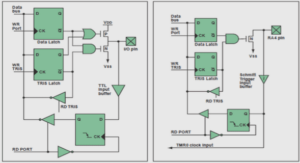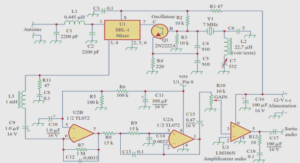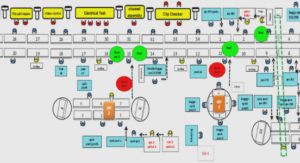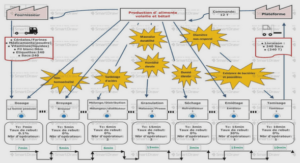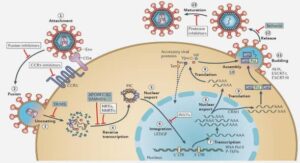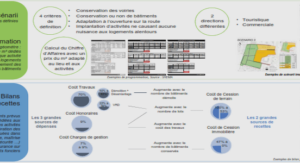Quinolines synthesis from azidophenylalkynyl acetates
1.0 equiv. of a solution of butyllithium in hexanes is added to a solution of 1.1 equiv. of ethynyltrimethylsilane in THF at -78°C. The mixture is stirred at -78°C for 30 minutes. 1.0 equiv. of the ketone is then added and the resulting mixture stirred at -78°C and monitored by TLC. (The mixture’s temperature can be raised to 0°C or RT depending on the duration of the addition). When the reaction is complete, NH4Cl(sat) is added to the solution and the temperature is allowed to raise to RT. The phases are separated and the aqueous phase is extracted twice with diethyl ether. The combined organic phases are washed with brine and dried over Magnesium sulfate. After filtration, the solvents are evaporated and the crude is analyzed by NMR. RT until TLC shows no remaining starting material. The solvent is then evaporated under low pressure. NH4Cl(sat) and diethyl ether are added to the mixture. The phases are separated and the aqueous phase is extracted twice with diethyl ether. The combined organic phases are washed with water, brine and dried over Magnesium sulfate. After filtration, the solvents are evaporated and the crude is analyzed by NMR. The product is purified by column chromatography using petroleum ether:ethyl acetate (80:20) as eluent.
1.0 equiv. of 2-iodoanilin is dissolved in triethylamine (0.3 M) and the solution is degased by bubbling N2 for one hour. 0.02 equiv. of Pd(PPh3)2Cl2 and 0.04 equiv. of copper iodide are then added and the mixture stirred for 5 minutes. 1.0 equiv. of the alkyne obtained in the previous step is then added pure or in a 1M solution in triethylamine (if solid). The reaction mixture is stirred at RT until TLC shows no starting alkyne remaining (2h to overnight). NH4Cl(sat) and diethyl ether are added to the mixture. The phases are separated and the aqueous phase is extracted twice with diethyl ether. The combined organic phases are washed with water, brine and dried over Magnesium sulfate. After filtration, the solvents are evaporated and the crude is analyzed by NMR. The product is then purified by column chromatography using petroleum ether:ethyl acetate (85:15) as eluent. Acetonitrile can be added when the substrate is not soluble in the aqueous phase (up to 5mL). The mixture is stirred at 0°C and a 1.5M solution of 1.2 equiv. of sodium nitrite in water is added dropwise over 15 minutes. The resulting mixture is stirred at 0°C for 30 minutes. Then, 1.2 equiv. of a 1.5M solution of sodium azide in water is added dropwise over 15 minutes. The reaction mixture is stirred at 0°C for 30 minutes starting when no nitrogen degasing can be seen anymore. The reaction is quenched by Na2S2O3(sat) and diethyl ether is added. The phases are separated and the aqueous phase is extracted twice with diethyl ether. The combined organic phases are washed with water, brine and dried over Magnesium sulfate. After filtration, the solvents are evaporated and the crude is analyzed by NMR.N2 atmosphere at 0°C. 1.5 equiv. of triethylamine, 0.1 equiv. of DMAP and 1.5 equiv. of acetic anhydride are added. The reaction mixture is then heated to 40°C and stirred at this temperature until completion. NH4Cl(sat) is then added to the mixture. The phases are separated and the aqueous phase is extracted twice with dichloromethane. The combined organic phases are washed with water, brine and dried over Magnesium sulfate. After filtration, the solvent is evaporated and the crude is analyzed by NMR.
1.0 equiv. of 2-iodoanilin is dissolved in triethylamine (0.3 M) and the solution is degased by bubbling N2 for one hour. 0.02 equiv. of Pd(PPh3)2Cl2 and 0.04 equiv. of copper iodide are then added and the mixture stirred for 5 minutes. 1.0 equiv. of the alkyne obtained in the previous step is then added pure or in a 1M solution in triethylamine (if solid). The reaction mixture is stirred at RT until TLC shows no starting alkyne remaining (2h to overnight). NH4Cl(sat) and diethyl ether are added to the mixture. The phases are separated and the aqueous phase is extracted twice with diethyl ether. The combined organic phases are washed with water, brine and dried over Magnesium sulfate. After filtration, the solvents are evaporated and the crude is analyzed by NMR. The product is then purified by column chromatography using petroleum ether:ethyl acetate (85:15) as eluent. Acetonitrile can be added when the substrate is not soluble in the aqueous phase (up to 5mL). The mixture is stirred at 0°C and a 1.5M solution of 1.2 equiv. of sodium nitrite in water is added dropwise over 15 minutes. The resulting mixture is stirred at 0°C for 30 minutes. Then, 1.2 equiv. of a 1.5M solution of sodium azide in water is added dropwise over 15 minutes. The reaction mixture is stirred at 0°C for 30 minutes starting when no nitrogen degasing can be seen anymore. The reaction is quenched by Na2S2O3(sat) and diethyl ether is added. The phases are separated and the aqueous phase is extracted twice with diethyl ether. The combined organic phases are washed with water, brine and dried over Magnesium sulfate. After filtration, the solvents are evaporated and the crude is analyzed by NMR. In most cases the next step can be carried out without further purification.

